When it comes to the compact luxury SUV segment, few rivalries are as noteworthy as that of the Audi Q3 and the BMW X1. Both brands have carved out a strong reputation for performance, comfort, and innovation in the automotive market. In this article, we will dive deep into the technical aspects and innovations of these two compelling contenders to help you make an informed choice.
Audi Q3 vs BMW X1 – Which one offers the better deal?
Everyday use, family trips or long-distance drives – here’s where the differences show.
Discover whether Audi Q3 or BMW X1 fits your lifestyle better.
Design and Dimensions
The Audi Q3 boasts a length of 4484 mm and a height of 1585 mm, offering a robust and sporty stance. Its bold Singleframe grille and sharp LED headlamps catch the eye, creating a premium aesthetic that is unmistakably Audi. On the other hand, the BMW X1 measures slightly longer at 4500 mm and features a taller profile with a height ranging from 1622 mm to 1642 mm. The X1 retains BMW’s signature kidney grille and a more aggressive overall design.
In terms of width, the Q3 is slightly wider at 1849 mm, compared to the X1's 1845 mm. Both vehicles are five-door SUVs with spacious interiors designed to comfortably accommodate five occupants.
Powertrains and Performance
The Audi Q3 offers a variety of powertrains ranging from 150 HP to a potent 245 HP, all powered by highly efficient petrol and diesel engines. With a torque output of up to 370 Nm, it delivers impressive acceleration, reaching 0-100 km/h in as fast as 5.8 seconds. The Q3 also provides both front-wheel drive and all-wheel drive options, coupled with manual and automatic transmission choices, making it versatile in various driving scenarios.
Conversely, the BMW X1 also showcases a range of engine configurations, producing from 136 HP to a blistering 326 HP in its plug-in hybrid variant. Its acceleration is equally commendable, with the fastest variant achieving 0-100 km/h in just 5.4 seconds. Most models feature an advanced automatic transmission with a smooth shifting experience. This SUV too offers both front and all-wheel drive systems.
Fuel Efficiency
Fuel efficiency is a critical aspect in today’s automotive landscape, and both SUVs deliver commendable numbers. The Q3 has a consumption rate between 5.5 and 8.5 L/100km, depending on the engine variant, whereas the BMW X1 excels with an impressive rate as low as 4.6 L/100km for its more efficient models. This is further enhanced in the hybrid models, offering an electric range of up to 83 km with a 14.2 kWh battery capacity.
Interior Comfort and Innovation
Inside the Q3, Audi's MMI infotainment system is at the forefront, offering seamless connectivity and an intuitive interface. The cabin is laden with high-quality materials, accentuated by ambient lighting, providing a luxurious environment for passengers. The Q3 also offers a generous trunk capacity of 530 L.
On the flip side, the BMW X1 boasts an equally sophisticated interior, featuring the iDrive infotainment system, which is renowned for its user-friendly nature. With a trunk capacity of 540 L, it provides slightly more storage than the Q3. The design philosophy emphasizes driver engagement, with controls ergonomically placed for easy access.
Safety and Driver Assistance Technologies
Both the Audi Q3 and BMW X1 come equipped with a suite of safety and driver assistance technologies. The Q3 includes features like adaptive cruise control, lane departure warning, and a rearview camera, ensuring peace of mind during every drive. Similarly, the X1 offers advanced safety measures, including collision warning systems and active park distance control.
Final Thoughts
Choosing between the Audi Q3 and BMW X1 ultimately boils down to personal preferences and priorities. If you prioritize superior fuel efficiency and hybrid options, the X1 may be your best bet. However, if performance and a luxurious interior are at the top of your list, the Q3 offers compelling options. Both models come packed with technology and comfort, ensuring that whether you choose Audi or BMW, you’ll be driving a strong contender in the luxury SUV segment.
Here’s where it gets real: The technical differences in detail
Costs and Efficiency:
Looking at overall running costs, both models reveal some interesting differences in everyday economy.
Both models are evenly matched in price – each starts at 38200 £.
Fuel consumption also shows a difference: Audi Q3 manages with 1.70 L and is therefore clearly more efficient than the BMW X1 with 2.50 L. The difference is about 0.80 L per 100 km.
As for range, the Audi Q3 performs noticeable better – achieving up to 119 km, about 38 km more than the BMW X1.
Engine and Performance:
Power, torque and acceleration are the classic benchmarks for car enthusiasts – and here, some clear differences start to show.
When it comes to engine power, the BMW X1 has a to a small extent edge – offering 326 HP compared to 272 HP. That’s roughly 54 HP more horsepower.
In acceleration from 0 to 100 km/h, the BMW X1 is barely noticeable quicker – completing the sprint in 5.40 s, while the Audi Q3 takes 5.70 s. That’s about 0.30 s faster.
In terms of top speed, the BMW X1 performs hardly perceptible better – reaching 250 km/h, while the Audi Q3 tops out at 240 km/h. The difference is around 10 km/h.
There’s also a difference in torque: BMW X1 pulls a bit stronger with 477 Nm compared to 400 Nm. That’s about 77 Nm difference.
Space and Everyday Use:
Whether family car or daily driver – which one offers more room, flexibility and comfort?
Both vehicles offer seating for 5 people.
In curb weight, BMW X1 is barely noticeable lighter – 1575 kg compared to 1635 kg. The difference is around 60 kg.
In terms of boot space, the BMW X1 offers minimal more room – 540 L compared to 488 L. That’s a difference of about 52 L.
In maximum load capacity, the BMW X1 performs slightly better – up to 1600 L, which is about 214 L more than the Audi Q3.
When it comes to payload, Audi Q3 slight takes the win – 535 kg compared to 500 kg. That’s a difference of about 35 kg.
Who comes out on top?
Overall, the Audi Q3 shows itself to be dominates this comparison and secures the title of DriveDuel Champion.
It convinces with the more balanced overall package and proves to be the more versatile choice for everyday use.
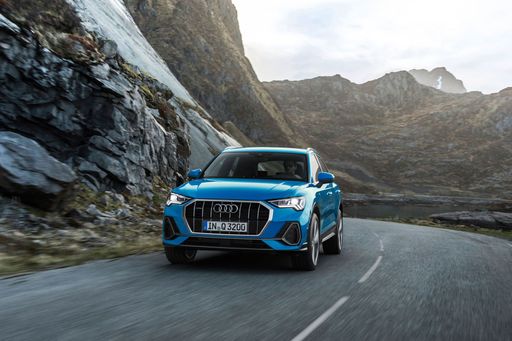 @ Audi AG
@ Audi AG
Audi Q3
Audi Q3
The Audi Q3 feels like a grown-up compact SUV with premium polish and city-friendly agility, the sort of car that makes weekend escapes and daily commutes equally satisfying. Inside, you get quality materials and smart packaging that keep things practical without skimping on style, so it’s an easy pick for buyers who want luxury without the drama.
details @ Audi AG
@ Audi AG
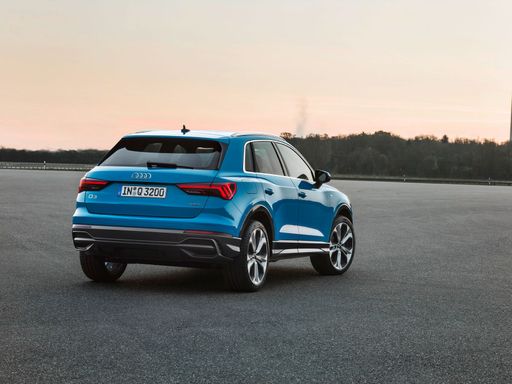 @ Audi AG
@ Audi AG
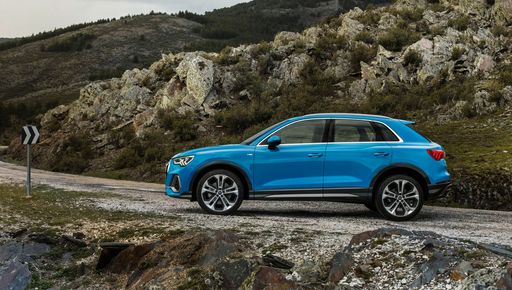 @ Audi AG
@ Audi AG
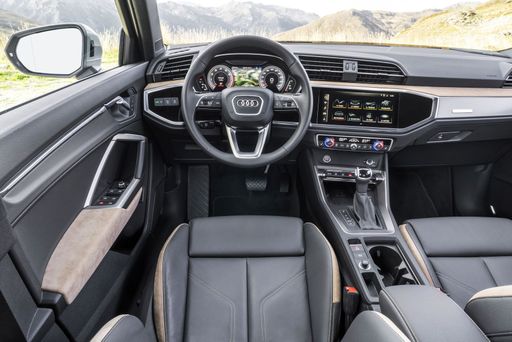 @ Audi AG
@ Audi AG
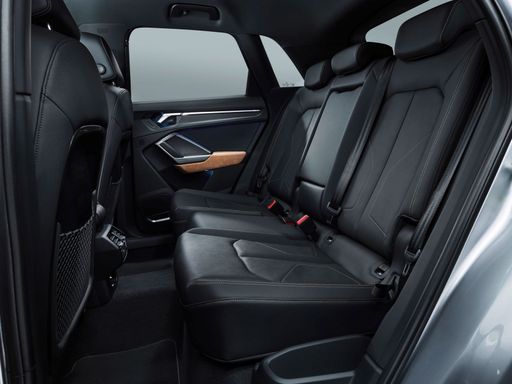 @ Audi AG
@ Audi AG
BMW X1
The BMW X1 brings a premium feel to compact crossover life, wrapping practical space and agile handling into a tidy, upscale package. It’s ideal for buyers who want BMW driving dynamics without the bulk, offering everyday comfort and a few clever tricks to keep the commute interesting.
details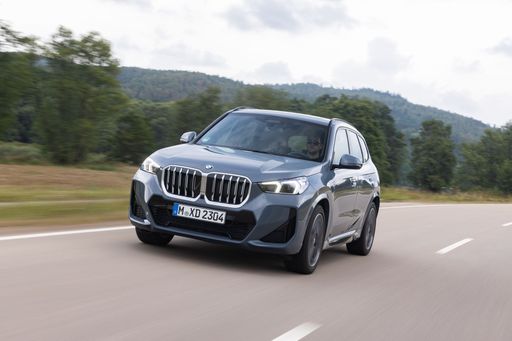 @ BMW Group Press
@ BMW Group Press
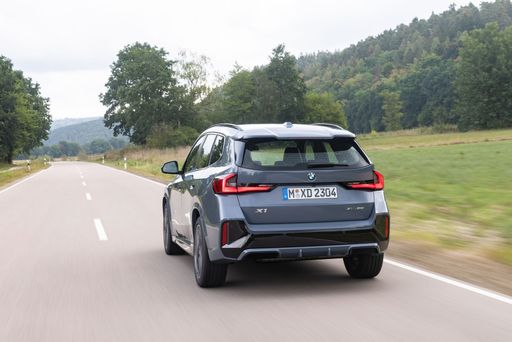 @ BMW Group Press
@ BMW Group Press
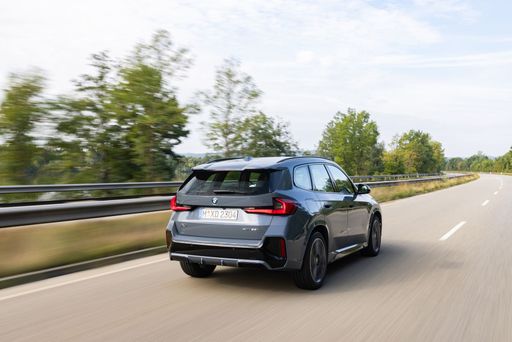 @ BMW Group Press
@ BMW Group Press
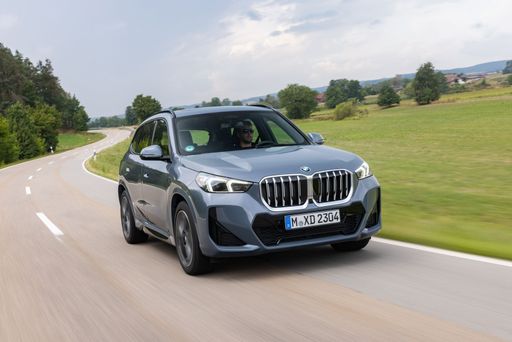 @ BMW Group Press
@ BMW Group Press
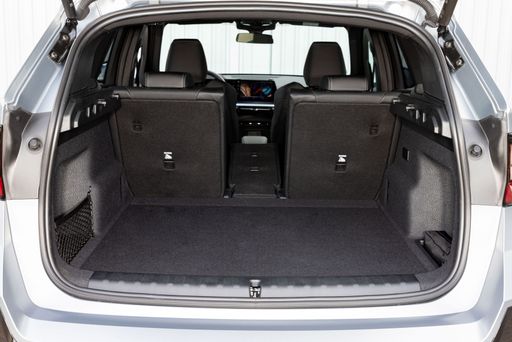 @ BMW Group Press
@ BMW Group Press
 @ Audi AG
@ Audi AG
|
 @ BMW Group Press
@ BMW Group Press
|
|
|
|
Costs and Consumption |
|
|---|---|
|
Price
38200 - 52900 £
|
Price
38200 - 55500 £
|
|
Consumption L/100km
1.7 - 8.6 L
|
Consumption L/100km
2.5 - 7.7 L
|
|
Consumption kWh/100km
-
|
Consumption kWh/100km
-
|
|
Electric Range
118 - 119 km
|
Electric Range
81 km
|
|
Battery Capacity
19.70 kWh
|
Battery Capacity
14.20 kWh
|
|
co2
39 - 195 g/km
|
co2
57 - 175 g/km
|
|
Fuel tank capacity
45 - 60 L
|
Fuel tank capacity
47 - 54 L
|
Dimensions and Body |
|
|---|---|
|
Body Type
SUV
|
Body Type
SUV
|
|
Seats
5
|
Seats
5
|
|
Doors
5
|
Doors
5
|
|
Curb weight
1635 - 1900 kg
|
Curb weight
1575 - 1935 kg
|
|
Trunk capacity
375 - 488 L
|
Trunk capacity
490 - 540 L
|
|
Length
4531 mm
|
Length
4500 - 4505 mm
|
|
Width
1859 mm
|
Width
1845 mm
|
|
Height
1559 - 1601 mm
|
Height
1622 - 1642 mm
|
|
Max trunk capacity
1196 - 1386 L
|
Max trunk capacity
1495 - 1600 L
|
|
Payload
505 - 535 kg
|
Payload
490 - 500 kg
|
Engine and Performance |
|
|---|---|
|
Engine Type
Petrol MHEV, Petrol, Plugin Hybrid, Diesel
|
Engine Type
Diesel MHEV, Petrol MHEV, Petrol, Diesel, Plugin Hybrid
|
|
Transmission
Automatic
|
Transmission
Automatic
|
|
Transmission Detail
Dual-Clutch Automatic
|
Transmission Detail
Dual-Clutch Automatic
|
|
Drive Type
Front-Wheel Drive, All-Wheel Drive
|
Drive Type
Front-Wheel Drive, All-Wheel Drive
|
|
Power HP
150 - 272 HP
|
Power HP
136 - 326 HP
|
|
Acceleration 0-100km/h
5.7 - 9.2 s
|
Acceleration 0-100km/h
5.4 - 9.2 s
|
|
Max Speed
208 - 240 km/h
|
Max Speed
190 - 250 km/h
|
|
Torque
250 - 400 Nm
|
Torque
230 - 477 Nm
|
|
Number of Cylinders
4
|
Number of Cylinders
3 - 4
|
|
Power kW
110 - 200 kW
|
Power kW
100 - 240 kW
|
|
Engine capacity
1498 - 1984 cm3
|
Engine capacity
1499 - 1998 cm3
|
General |
|
|---|---|
|
Model Year
2025
|
Model Year
2024 - 2025
|
|
CO2 Efficiency Class
E, G, B
|
CO2 Efficiency Class
D, E, F, B
|
|
Brand
Audi
|
Brand
BMW
|
Is the Audi Q3 offered with different drivetrains?
The Audi Q3 is available as Front-Wheel Drive or All-Wheel Drive.
The prices and data displayed are estimates based on German list prices and may vary by country. This information is not legally binding.
